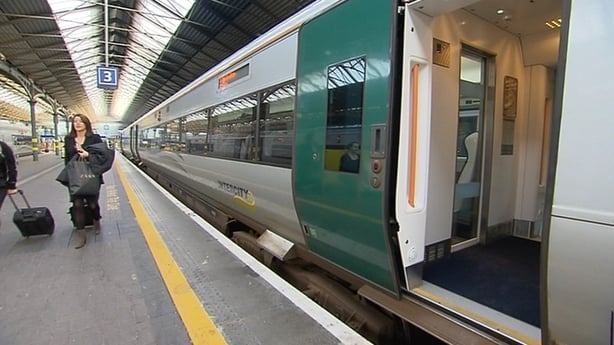Mandatory inspections of railway structures like tunnels and bridges were not being carried out at required intervals by Iarnród Éireann due to a lack of staff over recent years, according to the State's railway safety watchdog.
An audit by the Commission for Railway Regulation revealed that the record keeping and inspection of railway tunnels by Iarnród Éireann was lacking probably because "monitoring is not being applied to tunnels in the same way as other structures".
It concluded the risk posed by such a lack of inspections was "unmitigated and uncontained".
"The maintenance history of these tunnels should be reviewed to confirm that their condition and deterioration is being adequately managed," the CRR recommended.
It also found that technical examinations of rail infrastructure after bridges had been struck by other vehicles were not being carried out within the required six weeks of such incidents.
The CRR said the volume of non-compliances in relation to bridge strikes including the length of time to assess any damage created a risk that was "unquantifiable".
The audit, which was released under freedom of information legislation, was completed in February 2022 and examined the risk management of track and structures by Iarnród Éireann engineers.
Overall, it concluded there were no major non-compliances and there was no immediate risk to the safety of persons as a result of issues identified in the report.
It also acknowledged that the majority of structures inspected were well managed and maintained.
However, it revealed that there were no records of a major inspection of the railway tunnel in Enniscorthy, Co Wexford on the Dublin-Rosslare railway line since at least 2010, even though one should be conducted at least every six years.

CRR auditors found evidence of movement in the masonry arch in the tunnel.
The audit also discovered that actions to address defects identified on railway tracks were not being followed up within recommended time limits.
In addition, it found that there had been no formal review of some live risks for a period of five years to evaluate control measures that had been implemented to address concerns identified by railway engineers.
The CRR said the root cause of many of its findings could be linked to a shortage of specialist staff.
The regulator recorded that Iarnród Éireann staff had expressed disappointment that experienced personnel who had interviewed for a role could be left for several months without a formal offer by which time they had found alternative work because of the competitive climate for skilled engineers.
The CRR recommended that the "unnecessarily long" hiring process for experienced technical staff should be addressed by the company.
It also revealed that not all risks uncovered by Iarnród Éireann staff had been formally registered on a central system.
The audit found there were differing opinions among the three senior engineers in charge of track and structures about what should be included on the company's risk register.
It also observed that they had different ways of planning which structures needed to be inspected.
While the risk register is reviewed at "periodic technical meetings", the CRR highlighted that such monitoring was limited to risks which had been added, changed or removed.
The CRR expressed concern that the decision of an individual engineer that a risk did not warrant inclusion on the register was not subject to peer review.
The watchdog body also noted that there was no guidance over whether risks should be categorised as low, medium or high.
CRR auditors expressed surprise at the low number of existing risks at the time of the inspection given the thousands of structures on the rail network.
They also discovered "significant gaps", sometimes of several years, between updates on the status of a risk.
In some instances, CRR found that engineers had reported defects which required monitoring but such concerns were not formally captured on Iarnród Éireann’s asset management system.
The CRR also called for greater clarity over the definition of when inspections of structures were "overdue".
The audit found there was a significant number of inspections of buffer stops overdue because of a policy decision to forego such inspections due to staff shortages.
The CRR observed there was no record of such a decision or any risk assessment of the decision.
However, the audit noted that the senior track and structure engineers who participated in the audit were "highly skilled, competent and risk-averse individuals."
It also acknowledged that Iarnród Éireann was continuing to improve its processes and procedures regularly.
An Iarnród Éireann spokesperson said all the CRR’s recommendations were fully accepted and being implemented.
The spokesperson said staff vacancies at the time of the audit had subsequently been filled.
"As is the case with any process driven industry, there are always further improvements that can be made and it was the intent of this audit to find and address these," the spokesperson added.

